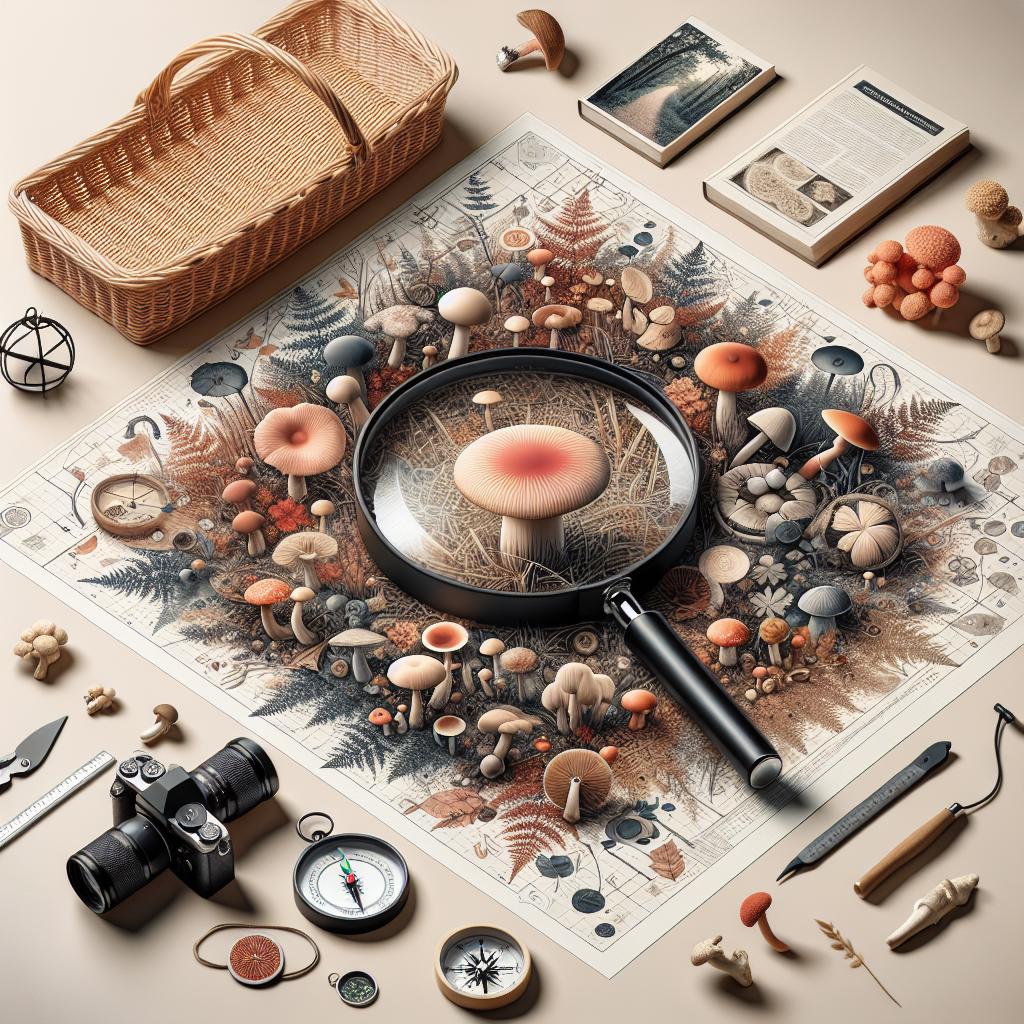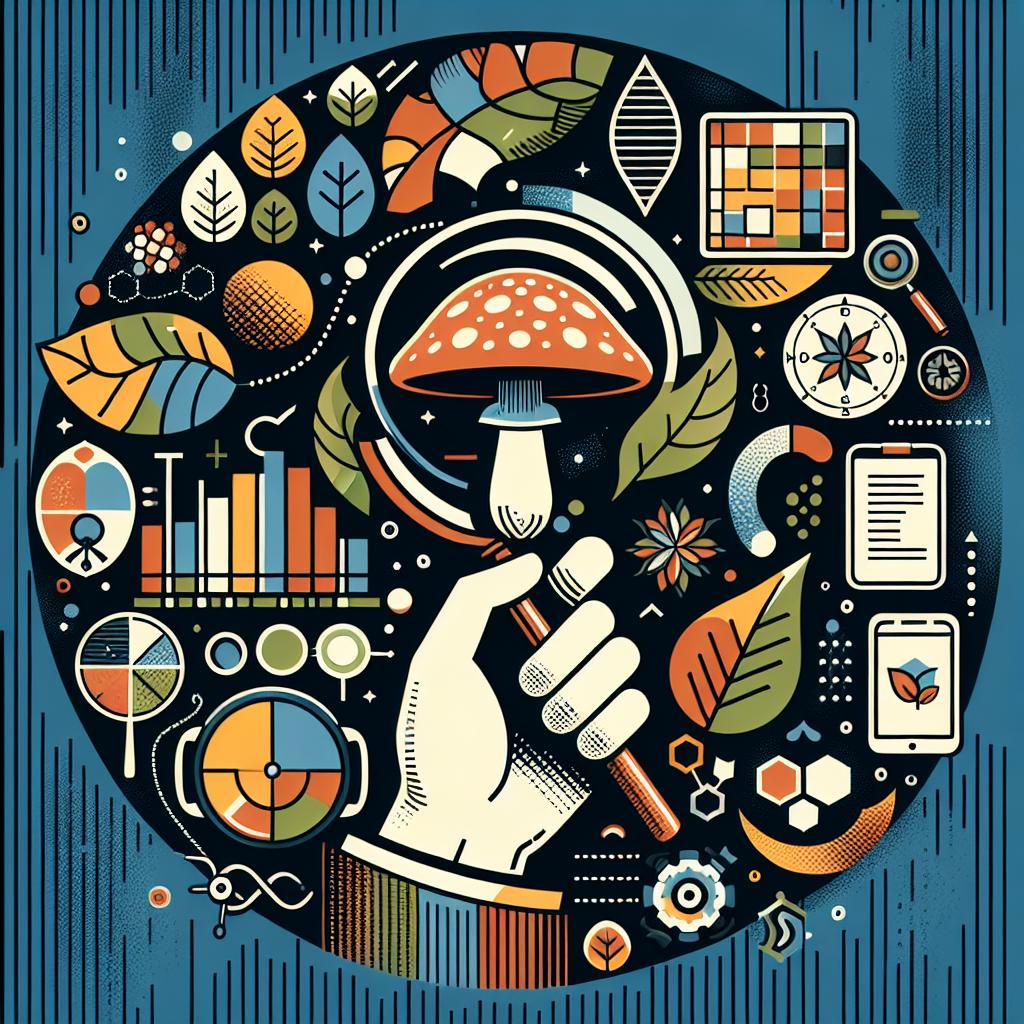Nestled in the heart of the Smoky Mountains, Gatlinburg offers more than just breathtaking vistas and crisp mountain air—it holds nature’s secret treasure: a diverse array of edible fungi. As the seasons change, an enchanting underworld comes alive beneath the forest canopy, beckoning both seasoned mycologists and curious adventurers to explore its mysterious depths. This article serves as your compass to the best hiking trails in Gatlinburg, each one a path leading to the hidden gems of the fungal kingdom. Whether you’re a gourmet forager eager to transform wild finds into culinary masterpieces, or simply a nature enthusiast fascinated by these quirky organisms, Gatlinburg’s trails promise an unforgettable journey into the world of wild mushrooms. Ready your hiking boots and bring your field guide; an entire ecosystem of edible marvels awaits discovery.
Discovering Natures Bounty: Preparing for a Mushroom Hunting Adventure
Gatlinburg offers an enchanting backdrop for those eager to embark on a mushroom-hunting odyssey. As your boots hit the earthy trails, the verdant landscapes transition into a vivid tapestry of fungi waiting to be discovered. Old Sugarlands Trail, nestled in the Smoky Mountains, provides an ideal setting with its rich forest floor harboring edible treasures such as chanterelles and morels. As you hike, keep an eye on the shady and damp spots where these mushrooms flourish. Cove Hardwood Nature Trail offers another rewarding path, where the moist environment nourishes an abundance of oyster mushrooms and puffballs. Be sure to venture after a fresh rain, as it brings mushrooms to life from their hidden slumber.
Equipped with knowledge yet eager for more, consider the bounty that awaits on the Trillium Gap Trail. Here, gigantic polypores cling to decaying logs, and the elusive lion’s mane mushrooms dangle from moss-laden trunks. Essential gear can enhance your foraging experience:
- Mesh Bags: Allow spore dispersal as you collect.
- Field Guide: Keep a detailed book to help identify your finds.
- Knife: For clean and sustainable mushroom harvesting.
| Trail | Notable Edibles |
|---|---|
| Old Sugarlands Trail | Chanterelles, Morels |
| Cove Hardwood Nature Trail | Oyster Mushrooms, Puffballs |
| Trillium Gap Trail | Lion’s Mane, Polypores |

Prime Spots in Gatlinburg: Trails Teeming with Edible Fungi
Nestled within the lush landscapes of Great Smoky Mountains National Park, Gatlinburg offers a bounty for both seasoned mycologists and curious foragers. Many of the trails meander through forests where the air is thick with the earthy scent of pine needles and fallen leaves, creating a perfect habitat for a variety of edible fungi. One popular trail is the Rainbow Falls Trail, a challenging yet rewarding journey that takes hikers through a vibrant woodland teeming with chanterelles and morels. The trail’s rich, loamy soil and unique microclimate create ideal conditions for these sought-after mushrooms.
Other treasured hotspots include the Trillium Gap Trail and Porters Creek Trail, where foragers have been known to spot oyster mushrooms, lion’s mane, and even the elusive black trumpets. These paths offer a feast for the eyes as well as the basket. Remember to bring a field guide and perhaps a local expert to help distinguish between edible and toxic varieties, as safety should always come first. Here’s a quick reference table for some fungi you may encounter:
| Mushroom Type | Description |
|---|---|
| Chanterelles | Bright yellow or orange, with a fruity aroma. |
| Morels | Honeycomb cap and a rich, nutty flavor. |
| Oyster Mushrooms | Fan-shaped and typically pale white to gray. |
- Rainbow Falls Trail – Known for chanterelles and morels
- Trillium Gap Trail – Great for spotting oyster mushrooms
- Porters Creek Trail – Offers a chance to find black trumpets

Safety First: Identifying and Harvesting Edible Mushrooms Responsibly
When traversing the lush forests of Gatlinburg, foraging for edible mushrooms can be both thrilling and rewarding. However, the importance of safety and responsibility cannot be overstated. Before heading out on those picturesque trails, make sure you’re equipped with a good guidebook or an app dedicated to fungi identification. This resource should help differentiate between delectable varieties and toxic look-alikes. Engage with fellow foragers in online communities or attend guided tours where experienced mycologists can offer in-depth insights into the mushroom varieties specific to the Gatlinburg area.
Here are some essential tips to remember:
- Know Before You Go: Familiarize yourself with local regulations as some areas may prohibit mushroom foraging.
- Bring the Right Gear: A basket, a knife, and breathable bags will preserve your finds and prevent them from spoiling.
- Harvest Sustainably: Only take the amount you need and leave some mushrooms behind for wildlife and spore dispersal.
| Mushroom | Identification Tip |
|---|---|
| Chanterelle | Lemon yellow color, funnel-shaped with false gills |
| Morel | Honeycomb texture and hollow interior |
Enhancing Your Foraging Gear: Tools and Tips for Success on the Trail
- Essential Foraging Tools: When trekking the lush trails of Gatlinburg, having a well-equipped foraging kit can transform your fungi scavenging adventures. A handy field guide specific to the region’s fungi can serve as your visual compass, ensuring you distinguish between edible treasures and their toxic lookalikes. A sharp folding knife with a comfortable grip is vital for delicately extracting mushrooms without damaging their structures. For containment, opt for a basket or mesh bag that allows air circulation, preserving the delicate textures of your finds. Additionally, consider a pocket-sized magnifying glass to inspect subtle characteristics important for identification. These tools not only elevate the safety of your foraging endeavors but enhance the joy of discovery along the way.
- Trail Tips for Foraging Success: Gatlinburg offers a bounty of nature’s harvest across various trails, but preparation is key to ensure a fruitful foraging mission. Research trail conditions beforehand and check the weather to anticipate trail safety and mushroom availability. It’s wise to wear waterproof boots and breathable clothing, geared for both wooded areas and open fields. Always remember–the heart of mushroom foraging lies in its mindful pursuit, so tread lightly and leave no trace. Create mini mental maps to remember hidden spots where mushrooms thrive, and always pack a notepad or use a phone app to log your foraging locations and findings. This not only assists your current journey but enriches future expeditions with accumulated knowledge.
| Foraging Tool | Purpose |
|---|---|
| Field Guide | Identifying local fungi |
| Folding Knife | Harvesting mushrooms |
| Mesh Bag | Air circulation during containment |
Q&A
Q&A: Exploring Gatlinburg’s Mushroom Wonderland
Gatlinburg’s lush forests are a treasure trove for mushroom enthusiasts if you know where to look. In this Q&A, discover the enchanting trails that double as foraging spots for edible fungi during hiking adventures.
Q1: Why is Gatlinburg an ideal location for finding edible fungi?
A1: Gatlinburg is nestled in the heart of the Great Smoky Mountains, which boasts diverse ecosystems and rich, fertile soils—an ideal habitat for a wide variety of fungi. The mild, moist climate, combined with the spectacular forests, creates a perfect breeding ground for many edible mushroom species.
Q2: What are some of the most common edible fungi found in the area?
A2: While exploring the trails, you’re likely to encounter chanterelles, morels, and lion’s mane mushrooms. Each of these species is not only prized for their unique flavors and textures but is also relatively easy to identify, making them a favorite among foragers.
Q3: Can you recommend some trails in Gatlinburg for novices eager to try foraging?
A3: Certainly! The Alum Cave Trail offers a blend of scenic views and mushroom hunting opportunities, especially in the cooler, shaded areas. The Porters Creek Trail is another excellent choice, known for its rich biodiversity and the variety of fungi that flourish along its path.
Q4: Is there a specific season that is best for mushroom hunting in Gatlinburg?
A4: Late summer to early fall is the prime season for mushroom foraging in Gatlinburg. During this time, the conditions are just right, with ample rainfall and moderate temperatures encouraging a bountiful mushroom harvest.
Q5: How can foragers ensure they are collecting edible and safe mushrooms?
A5: Identifying mushrooms can be tricky, so it’s crucial to arm yourself with knowledge. Carry a reliable field guide and consider joining a local mycology group or hiring an experienced guide. And remember, if you’re ever in doubt about a mushroom’s identity, it’s best to leave it be.
Q6: Are there any regulations or etiquette for foraging in Gatlinburg?
A6: Absolutely. Foragers should always adhere to the “leave no trace” principles, which include not disturbing the environment and respecting wildlife. Be aware that foraging in national parks is typically prohibited, so ensure that you’re on legally permissible land for foraging activities.
Q7: What gear should one bring along for a successful mushroom foraging trip in Gatlinburg?
A7: Essential items include a sturdy pair of boots, a mushroom foraging knife, a mesh or paper bag (to keep mushrooms fresh), a detailed field guide, and a smartphone to document findings for verification. Don’t forget water, snacks, and a map or GPS device to navigate the trails safely.
By respecting nature and exercising care, both novice and expert foragers can enjoy the serene beauty and hidden treasures of Gatlinburg’s trails. Happy hiking and safe foraging!
To Wrap It Up
As we wrap up our journey through the lush and enchanting forests surrounding Gatlinburg, it becomes clear that these trails offer more than just breathtaking landscapes and serene escapes. They are a living canvas of nature’s bounty, inviting both the seasoned forager and the curious explorer to uncover the edible treasures hidden beneath the canopy.
Whether you choose to wander through mossy groves, traverse babbling brooks, or pause in the shadows of towering trees, the experience of hunting for fungi is a call to reconnect with the rhythms of the earth. The trails that wind through this region are not just pathways, but tales untold, waiting to delight those who tread gently and observe keenly.
So, the next time you find yourself in the embrace of Gatlinburg’s woodlands, perhaps with a basket in hand and a guidebook in the other, remember that each step taken is an opportunity to learn, savor, and marvel at the age-old relationship between humans and the forest.
As we bid farewell for now, let the spirit of exploration guide you, and may your hikes be filled with discovery, wonder, and the occasional delightful find. Until the next adventure unfolds in the heart of nature, happy foraging!

